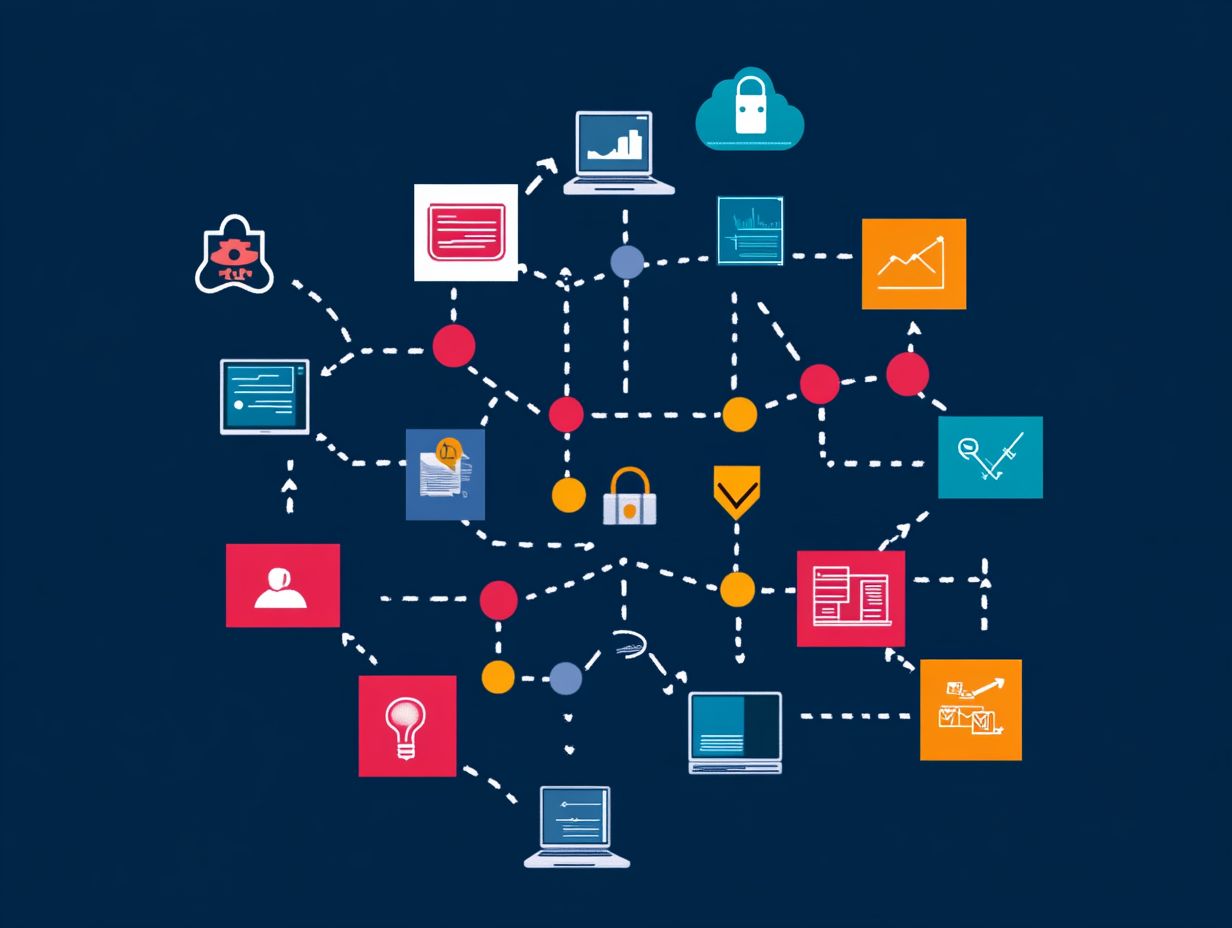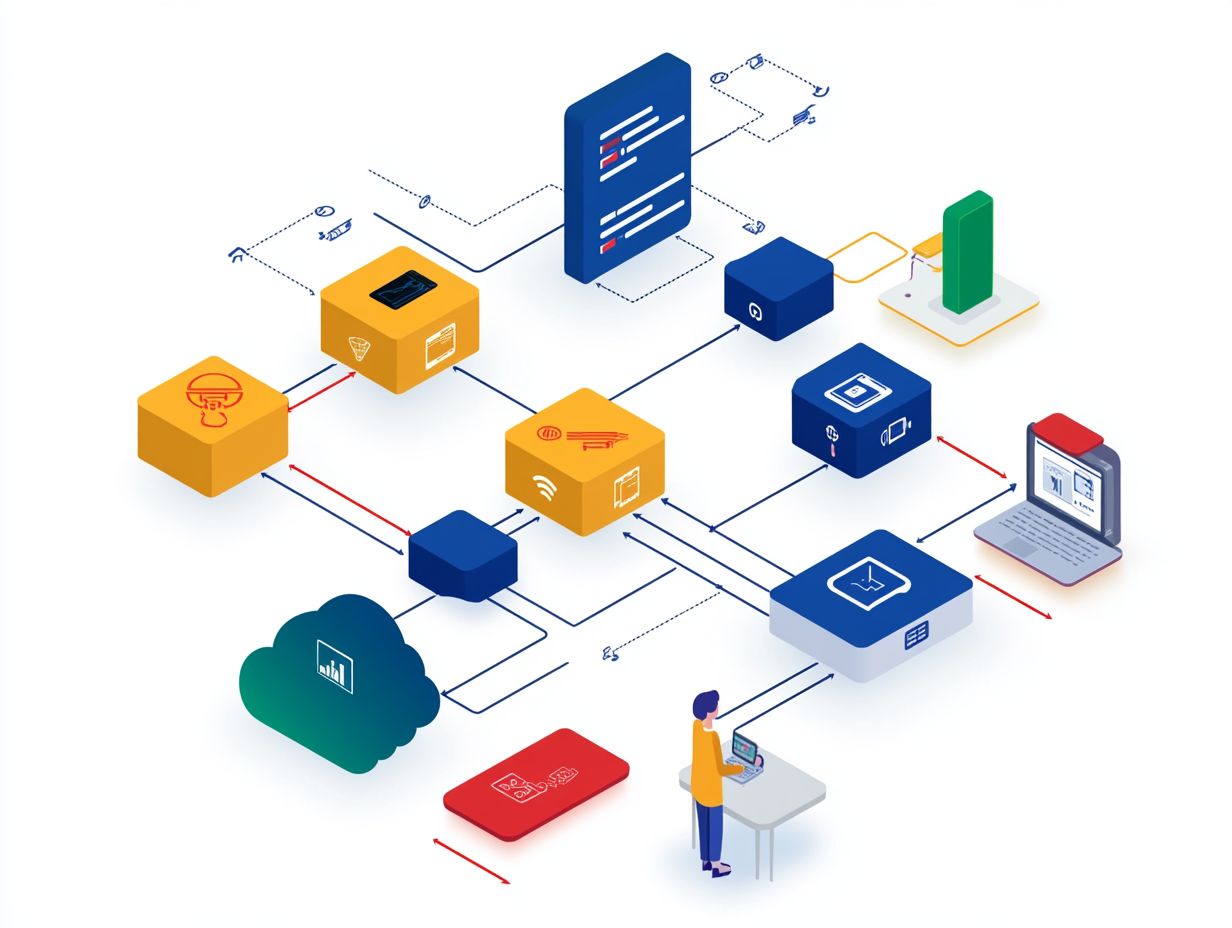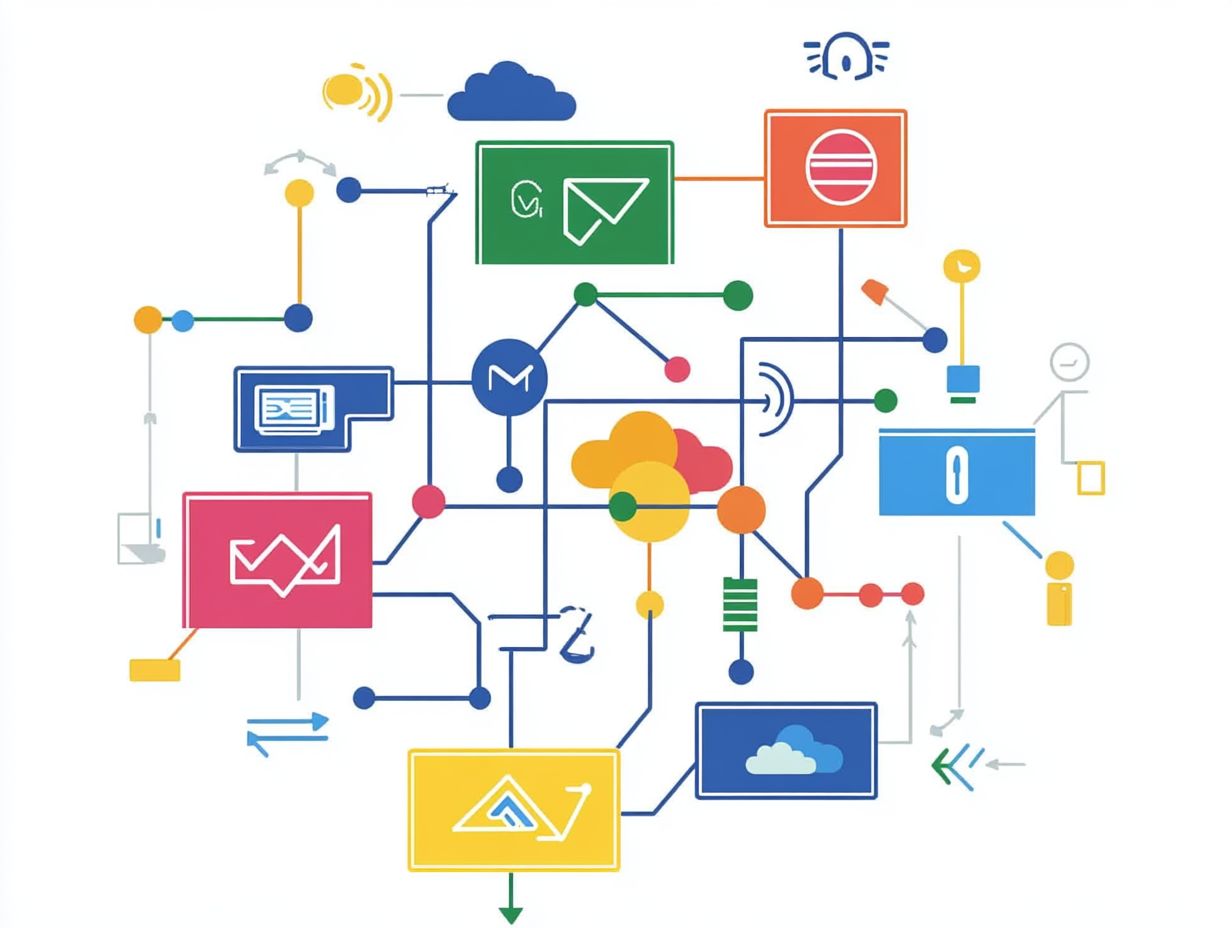Understanding Cloud Incident Management Processes
In today’s digital landscape, effective cloud incident management is essential for ensuring business continuity and protecting your valuable data. This article delves into what cloud incidents are and the potential impacts they can have on your organization.
You ll discover the key components of cloud incident management, including the roles and responsibilities involved and the essential tools you should be using.
A comprehensive, step-by-step approach to managing incidents from identification to recovery is laid out for you, alongside best practices that will enhance your prevention efforts and promote continuous improvement.
Prepare to navigate these vital strategies that will help you build a resilient cloud environment!
Contents
- Key Takeaways:
- Key Components of Cloud Incident Management
- Steps for Managing Cloud Incidents
- Best Practices for Cloud Incident Management
- Frequently Asked Questions
- What is the purpose of understanding cloud incident management processes?
- What are some common cloud incident management processes?
- How can understanding cloud incident management processes benefit my organization?
- What are some challenges associated with cloud incident management processes?
- How can I improve my understanding of cloud incident management processes?
- Is it necessary for all organizations to have an understanding of cloud incident management processes?
- Understanding Cloud Incident Management
Key Takeaways:

Cloud incidents can have a significant impact on business operations and should be managed efficiently to minimize the damage. Effective cloud incident management requires clear roles and responsibilities, efficient communication and collaboration, and the use of appropriate tools and technologies.
You should focus on key steps like identification, prioritization, containment, resolution, recovery, and post-incident analysis. Continuous improvement and proactive prevention measures are also crucial for successful incident management.
Defining Cloud Incidents and Their Impact
Cloud incidents are disruptive events that can significantly impact your business operations, leading to security issues like data breaches and service interruptions. Understanding their implications is essential for anyone utilizing cloud services such as AWS, GCP, or Microsoft Azure.
These incidents can undermine customer trust and breach compliance requirements. Implementing cloud incident management helps you create effective response plans that reduce risks, safeguard your cloud infrastructure, and ensure operational continuity.
Taking a closer look at various types of cloud incidents ranging from misconfigurations and outages to advanced persistent threats reveals a spectrum of challenges you may face. Such incidents can result in financial losses, reputational harm, or legal consequences, making it crucial for your business to prioritize a robust incident management strategy.
Effective monitoring and alerting systems are vital for enhancing your incident response capabilities, empowering your teams to act swiftly and accurately. By utilizing tools that generate automatic alerts to notify you of issues and real-time analytics, you can reduce response times and minimize disruptions.
This approach clearly demonstrates that preparedness and vigilance are essential for navigating the complexities of the cloud landscape.
Key Components of Cloud Incident Management
Cloud incident management involves a systematic approach to preparing for, detecting, and responding to incidents that could jeopardize your cloud services, whether they re hosted on AWS, GCP, or Azure.
Grasping the essential components of this management process is vital for your organization to uphold customer trust and fulfill compliance requirements, especially as cyber threats and infrastructure challenges continue to escalate.
Roles and Responsibilities
In cloud incident management, you’ll find a rich tapestry of roles and responsibilities that engage various stakeholders, including the Customer Success Manager, who is essential for ensuring client satisfaction and adhering to incident response protocols.
Each role whether it’s IT staff or management contributes crucially to the effective handling of security incidents and the preservation of operational integrity.
Take the Incident Response Team, for example; they re on the front lines, tasked with swiftly identifying and assessing threats. Meanwhile, Security Analysts dive into the technical depths, meticulously analyzing data for patterns or vulnerabilities. Compliance Officers play a vital role as well, making sure that all processes meet industry standards and regulations, thus minimizing legal risks.
Collaboration among these roles is critical. Their combined expertise leads to a rapid and efficient incident response, significantly reducing downtime and mitigating potential damage.
By promoting teamwork, organizations not only fulfill compliance requirements, but also bolster their overall resilience against future incidents.
Communication and Collaboration
Effective communication is vital in cloud incident management. During critical incident response phases, sharing timely information can greatly reduce the impact of security incidents.
You must leverage your cloud expertise and established protocols to maintain compliance and safeguard customer trust while addressing issues in real time.
Utilizing robust communication channels like Slack or Microsoft Teams promotes transparency among stakeholders, enabling rapid exchanges of insights and updates.
Incident management tools such as ServiceNow and PagerDuty play a crucial role by streamlining workflows and ensuring that alerts are promptly escalated to the appropriate personnel.
These platforms enhance coordination and empower you to document your responses meticulously, which is invaluable for future audits and continuous improvement.
By integrating these resources, you can ensure that your organization is well-prepared to manage incidents effectively, significantly boosting operational efficiency and overall response effectiveness.
Tools and Technologies
The effectiveness of your cloud incident management heavily relies on the tools and technologies you choose to implement. Advanced monitoring and alerting systems are essential, enabling automated oversight of your cloud environments.
These technologies not only ensure timely detection of incidents but also enhance your incident response framework, empowering your organization to leverage cloud expertise for efficient issue resolution.
By employing incident management platforms like ServiceNow or PagerDuty, you can significantly improve your response times.
These platforms help organize how incidents are managed and integrate incident data across various teams, facilitating seamless communication and collaboration elements crucial for quick incident resolution and compliance with industry regulations.
Incorporating log management tools such as Splunk or ELK Stack provides you with in-depth analytics, allowing your teams to pinpoint root causes and prevent future issues.
Together, these tools forge a robust incident response strategy that bolsters operational resilience, minimizes downtime, and maintains the trust of your stakeholders.
Steps for Managing Cloud Incidents

Managing cloud incidents involves several key steps. From identifying issues to recovery and root cause analysis, these steps help minimize service interruptions.
By adhering to this structured approach, you can uphold compliance requirements, ultimately safeguarding customer trust and maintaining the integrity of cloud services.
Identification and Prioritization
Identification and prioritization are essential cornerstones in cloud incident management. Recognizing security incidents through monitoring and alerting systems becomes paramount.
You ll find that automated monitoring tools are crucial in accurately assessing these incidents, enabling you to prioritize your response based on compliance requirements and the potential impact on business operations.
These tools, which may include cutting-edge artificial intelligence-driven solutions, facilitate real-time analysis, ensuring that you re alerted to issues before they escalate.
Process automation within your incident response frameworks is critical; it helps categorize incidents by severity and type, streamlining your response workflow.
Integrating incident response platforms with communication tools enhances collaboration among your teams, ensuring that everyone stays informed and can act swiftly.
By adopting effective monitoring practices, you not only improve your time to resolution but also enhance your overall security posture, allowing your organization to learn from incidents and proactively prevent future occurrences.
Containment and Resolution
Containment and resolution are pivotal phases in managing issues that occur in cloud services. Immediate actions are taken to reduce the impact of security incidents and service interruptions.
These steps aim to resolve the current incident and ensure compliance with regulations. They also help restore customer trust in your organization. During these phases, swift decision-making is essential.
You ll often lean on a set of predefined strategies, which might include:
- Isolating affected systems
- Implementing temporary fixes
- Gathering actionable intelligence for deeper investigation
Act fast to cut down on potential data loss and minimize downtime! Effective communication with stakeholders becomes crucial in these scenarios, fostering transparency and keeping everyone updated on progress and recovery efforts.
Such proactive measures tackle the immediate situation and bolster your overall incident management effectiveness. This prepares your organization for any potential future incidents.
Recovery and Post-Incident Analysis
The recovery and post-incident analysis stages are essential for grasping the root causes of incidents. They ensure that similar issues don t crop up again.
This phase requires meticulous documentation and analysis, vital for compliance and restoring customer trust in your cloud services. By identifying trends and weaknesses in your system architecture, you can implement targeted improvements that enhance overall resilience.
These processes promote knowledge sharing within your organization. Lessons learned from one incident can be effectively communicated across teams. This collaborative approach minimizes risks and nurtures a culture of continuous learning and adaptation.
As you refine your response strategies, you ll be better equipped to anticipate potential threats. This ultimately leads to a proactive stance that safeguards your cloud environments and protects your end-users from disruptions.
Best Practices for Cloud Incident Management
Implementing best practices for managing issues in cloud services is crucial for organizations looking to elevate their incident response capabilities. This reduces the risk of security incidents.
By adopting proactive measures like automated monitoring, regular training, and meticulous documentation, you not only meet compliance requirements but also harness cloud expertise to strengthen your defenses against cyber threats.
Proactive Measures for Prevention
Proactive measures for prevention are essential in cloud incident management. They allow you to anticipate and lessen potential security incidents before they escalate.
By implementing automated monitoring tools and leveraging cloud expertise, you can significantly reduce the frequency and impact of incidents. This enhances your overall operational resilience.
To further bolster your security posture, conduct regular assessments that evaluate both your incident response plans and overall cloud security architecture. Identifying vulnerabilities and potential points of failure enables informed updates to your strategies.
Engaging in tabletop exercises and simulations allows your team to practice response methodologies in a controlled environment. This ensures they are well-prepared for real-life scenarios.
Stay updated on the latest regulatory requirements and industry best practices. This reinforces a culture of compliance and vigilance, building a stronger and more secure cloud environment.
Now is the time to implement these strategies for better incident management results!
Continuous Improvement and Documentation

Continuous improvement and careful documentation are vital elements of effective cloud incident management. By embracing these practices, you empower your organization to learn from past incidents and refine incident response strategies.
Thorough documentation meets compliance requirements and serves as a valuable resource for enhancing processes and elevating future incident management efforts.
When you systematically document incidents, you create a robust knowledge base that captures what went wrong, the measures taken to resolve the issues, and the overall impact on the system. This practice fosters a culture of accountability and motivates your teams to analyze root causes and prevent future occurrences.
Every incident you document boosts your team’s knowledge and skills, making it easier to train staff and improve coordination during subsequent incidents.
The connection between documentation and effective incident response is clear, driving continuous improvement across all operational levels.
Frequently Asked Questions
What is the purpose of understanding cloud incident management processes?
Understanding cloud incident management processes is crucial for organizations that utilize cloud services. These processes help ensure the security and reliability of the cloud environment and allow for efficient resolution of any incidents that may arise, including cloud security incident reporting.
What are some common cloud incident management processes?
Some common cloud incident management processes include incident identification, analysis, response, and resolution. These processes involve identifying and categorizing incidents, assessing their impact, and implementing appropriate measures to resolve them.
How can understanding cloud incident management processes benefit my organization?
By understanding cloud incident management processes, organizations can improve their incident response time, minimize the impact of incidents, and maintain the overall security and reliability of their cloud environment. This can ultimately save time and resources and improve customer satisfaction.
What are some challenges associated with cloud incident management processes?
Organizations may face challenges such as lack of visibility into cloud incidents, difficulty in coordinating responses across multiple cloud environments, and limited resources for incident response. Understanding these challenges is essential for developing strategies to tackle them effectively!
How can I improve my understanding of cloud incident management processes?
Various resources are available for improving understanding of cloud incident management processes, such as online courses, webinars, and industry publications. Collaborating with other professionals in the field and staying updated on best practices and emerging trends is also beneficial.
Is it necessary for all organizations to have an understanding of cloud incident management processes?
It is crucial for all organizations utilizing cloud services to grasp these processes to enhance their security and efficiency.
Understanding Cloud Incident Management
Every organization using cloud services should understand incident management. This knowledge is key to ensuring security and reliability.

By mastering cloud incident management, organizations can react quickly to problems. This can save time, resources, and improve customer satisfaction.
Organizations face challenges like limited visibility into incidents and coordinating responses across different cloud environments. Knowing these challenges helps develop effective strategies.
To improve your understanding, check out online courses, webinars, and industry publications. Collaborate with others and stay updated on the latest trends.
Don t wait to get started! Understanding cloud incident management can make a significant difference for your organization.






